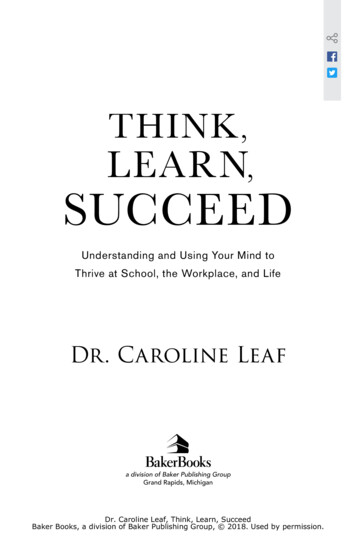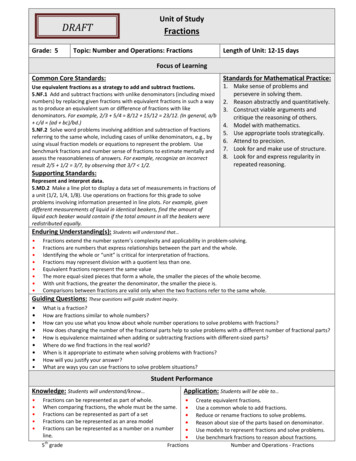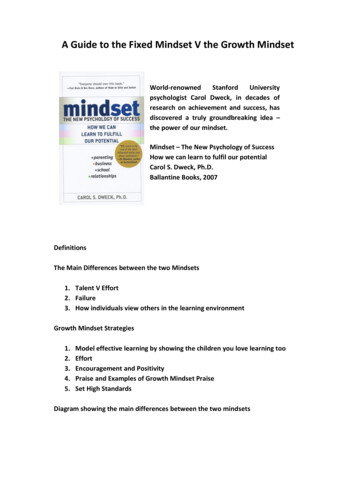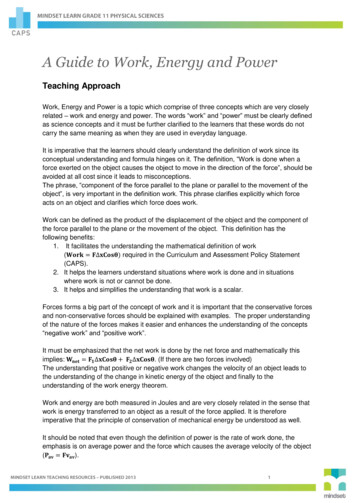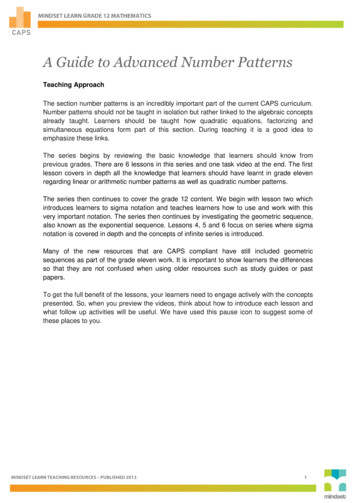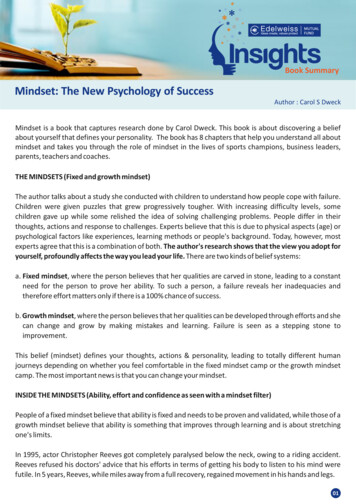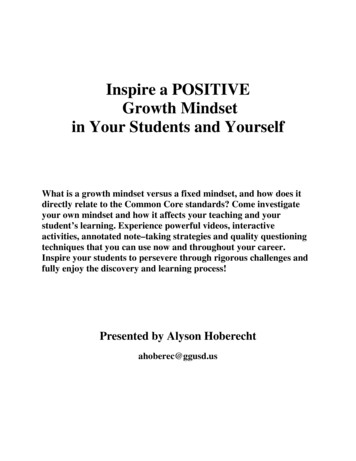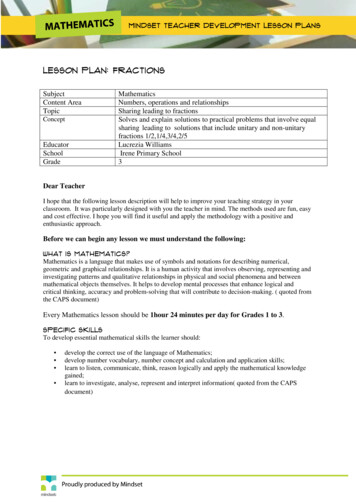
Transcription
LESSON PLAN: FRACTIONSSubjectContent ers, operations and relationshipsSharing leading to fractionsSolves and explain solutions to practical problems that involve equalsharing leading to solutions that include unitary and non-unitaryfractions 1/2,1/4,3/4,2/5Lucrezia WilliamsIrene Primary School3Dear TeacherI hope that the following lesson description will help to improve your teaching strategy in yourclassroom. It was particularly designed with you the teacher in mind. The methods used are fun, easyand cost effective. I hope you will find it useful and apply the methodology with a positive andenthusiastic approach.Before we can begin any lesson we must understand the following:What is Mathematics?Mathematics is a language that makes use of symbols and notations for describing numerical,geometric and graphical relationships. It is a human activity that involves observing, representing andinvestigating patterns and qualitative relationships in physical and social phenomena and betweenmathematical objects themselves. It helps to develop mental processes that enhance logical andcritical thinking, accuracy and problem-solving that will contribute to decision-making. ( quoted fromthe CAPS document)Every Mathematics lesson should be 1hour 24 minutes per day for Grades 1 to 3.Specific SkillsTo develop essential mathematical skills the learner should: develop the correct use of the language of Mathematics;develop number vocabulary, number concept and calculation and application skills;learn to listen, communicate, think, reason logically and apply the mathematical knowledgegained;learn to investigate, analyse, represent and interpret information( quoted from the CAPSdocument)
Weighting of Content Areas in Foundation PhaseWeighting of Content AreaGrade 1Numbers,Operations andRelationships*Patterns, Functionsand AlgebraSpace and Shape(Geometry)MeasurementData Handling(Statistics)Grade 2Grade 365%60%58%TimeTime perweek120 minutes10%10%10%80 minutes11%13%13%80 minutes9%5%12%5%14%5%80 minutes60 minutesNote: This lesson plan is only part of an entire daily Mathematics lesson.You should include as part of this lesson plan: CountingMental MathematicsConsolidation of conceptsProblem SolvingGroup workIndependent ActivitiesContent AreaTopicConcept andskills for theyear Grade cept and skills for theyear Grade 2 Concept and skills for theyear Grade 3Use and name unitary fractions in familiarcontexts includinghalves, quarters, thirdsand fifthsRecognise fractions indiagrammatic form Write fractions as 1half Use and name unitaryand non-unitaryfractions in familiarcontexts includinghalves, quarters,eighths, thirds, sixths,fifths.Recognise fractionsin diagrammatic formBegin to recognisethat two halves orthree thirds make onewhole and that onehalf and two quartersare equivalent
ApparatusDefinition1.2.3.4.5.Write fractions as 1half, 2 thirdsLiquorishRulersDiagrams of fractionsFraction stripsActivity SheetA fraction is a part of a wholeSlice a pizza, and you will have fractions:1/2(One-Half) 1/4(One-Quarter)3/8(Three-Eighths)The Numerator is the top number. It indicates the number of parts you have.The denominator is the bottom number. It indicates the number of parts thewhole is divided into.
TeachingMethodsDiscuss Fractions with the class. Ask a few questions to introduce thelesson. Do you like Liquorish? Is it healthy or unhealthy? What is it made from? Why do you think I chose Liquorish for a fractions lesson? How do we share it equally? How will we share the liquorish equally so that each personthe group gets the same size? What would you use to measure the liquorish so that youcould share it equally?Divide numbers with answers as fractions. Hold up the’ Hocus Pocus’ (fun bag) and children must guess what’s inside.They will each find a piece of Liquorish. Divide the children into groups of 3 ,4,5 or 6. Ask how many pieces each child received. The answer should be 1 pieceeach. Then the teacher will hand out 1 more pieces for the group to share. Each group should receive one for themselves and a remaining (extra) one. The learners must answer how they will share the extra piece amongstthemselves in groups. The remaining piece of liquorice must be divided sothat each child gets a piece. The teacher will work this out on the board using magnetic fractions similarto the shape and size of the liquorice explaining why the answer should be1 and ¼; ½; ⅙; ⅓; ⅕; ⅛ etc. NOT 1 and a small piece. These diagrams below shows how the extra piece of liquorice will bedivided by the learners so that it can be shared as a fraction amongst thegroups. Each learner will receive their own piece of liquorice plus a fractionof the extra piece.A group of 3 will receive 1 ⅓ pieces of liquorice⅓⅓A group of 4 will receive 1 ¼ of liquorice¼¼¼A group of 6 will receive 1 ⅙ of liquorice⅙⅙⅙⅙ ⅓¼⅙⅙End this lesson by allowing the learners to eat the liquorice and then do thewritten activity.Note: You can replace the liquorice with strips of paper measured out ahead of time.
co.uk/sa
The following activity sheet was taken from the DBE workbook for Grade 3.
131415161718
LESSON PLAN: FRACTIONS Dear Teacher I hope that the following lesson description will help to improve your teaching strategy in your classroom. It was particularly designed with you the teacher in mind. The methods used are fun, easy and cost effective. I hope you will find it useful and a

